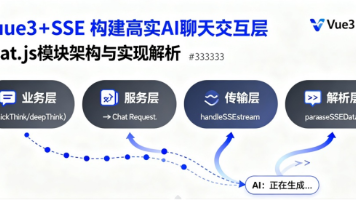AI生成内容标识技术详解:从政策到实践的双重水印实现
深度解析AI生成内容标识技术原理,开发者如何应对新规实施。
·
深度解析AI生成内容标识技术原理,开发者如何应对新规实施
01 新规实施:技术监管的时代到来
9月1日起,《人工智能生成内容标识办法》正式施行,这不仅是政策层面的规范,更是对AI内容识别技术的一次全面考验。作为开发者,我们需要关注的不仅是合规要求,更是背后的技术实现原理。
《办法》要求所有AI生成内容必须同时包含显式与隐式标识。从技术角度看,这相当于为AI生成内容建立了一套完整的“数字身份证”系统。腾讯已率先搭建标识管理体系,要求用户在传播AI内容时保持标识完整性。
02 双重标识:技术实现的深度解析
显式标识的技术实现
显式标识要求人眼可识别,常见技术方案包括:
# 文本内容标识示例
def add_ai_watermark(content):
watermark = "【AI生成内容】"
return watermark + content
# 图像水印实现
import cv2
def add_image_watermark(image_path, output_path):
image = cv2.imread(image_path)
watermark = "AI Generated"
cv2.putText(image, watermark, (10, 30),
cv2.FONT_HERSHEY_SIMPLEX, 1, (255, 255, 255), 2)
cv2.imwrite(output_path, image)隐式标识的技术原理
隐式标识采用数字水印技术,主要方法包括:
-
LSB(最低有效位)隐写:在图像像素最低位嵌入信息
-
DCT域水印:在频域中嵌入标识信息
-
NLP文本水印:通过特定词汇选择或句式结构嵌入标识
# 简单的文本隐式水印示例
import hashlib
def generate_text_watermark(text, secret_key):
"""生成文本隐式水印"""
signature = hashlib.sha256((text + secret_key).encode()).hexdigest()[:8]
# 将签名嵌入文本结构中的特定模式
return embed_signature(text, signature)03 技术挑战:标识系统的实现难点
抗攻击能力
数字水印需要抵抗常见的图像处理攻击:
-
压缩和重编码
-
裁剪和旋转
-
颜色调整和滤波处理
跨平台一致性
不同平台和传输过程中可能对内容进行重新编码,水印需要具备足够的鲁棒性:
# 鲁棒水印检测示例
def robust_watermark_detection(content, secret_key):
# 使用相关性检测和错误校正码
detected = False
confidence = 0.0
# 多方法检测提高准确性
detection_methods = [dct_detection, lsb_detection, nn_detection]
for method in detection_methods:
result = method(content, secret_key)
if result['detected']:
detected = True
confidence = max(confidence, result['confidence'])
return {'detected': detected, 'confidence': confidence}04 开发实践:如何快速适配新规要求
文本内容标识方案
对于NLP应用,建议采用以下方案:
class AIContentTagger:
def __init__(self):
self.visible_marker = "🔍AI生成内容"
self.secret_key = "your_secure_key"
def tag_text(self, text):
"""标记文本内容"""
# 添加显式标识
tagged_text = f"{self.visible_marker}\n{text}"
# 添加隐式标识
tagged_text = self._add_invisible_watermark(tagged_text)
return tagged_text
def _add_invisible_watermark(self, text):
"""添加隐式水印"""
# 基于文本哈希和密钥生成水印
watermark = generate_watermark_signature(text, self.secret_key)
# 通过特定字符编码或样式嵌入水印
return embed_watermark(text, watermark)多媒体内容处理
对于图像和视频内容,推荐使用成熟的水印SDK:
-
OpenCV水印扩展
-
FFmpeg滤镜组件
-
专业水印服务API
05 检测验证:如何确保标识有效性
水印检测技术栈
建立完整的水印检测流水线:
class WatermarkDetector:
def __init__(self):
self.detection_models = {
'text': TextWatermarkDetector(),
'image': ImageWatermarkDetector(),
'video': VideoWatermarkDetector()
}
def verify_content(self, content, content_type):
"""验证内容水印"""
detector = self.detection_models[content_type]
# 检测显式标识
visible_result = detector.detect_visible(content)
# 检测隐式标识
invisible_result = detector.detect_invisible(content)
return {
'is_ai_generated': visible_result or invisible_result,
'confidence': max(visible_result['confidence'],
invisible_result['confidence'])
}持续监控方案
建议实现实时检测机制:
-
API网关集成:在内容上传时自动检测
-
浏览器插件:客户端实时标识识别
-
后台扫描:定期检查已有内容
新规实施为AI内容治理提供了技术框架,也为开发者带来了新的技术挑战。双重水印技术不仅满足合规要求,更为数字内容溯源提供了技术基础。随着AI生成内容的普及,水印技术将成为每个开发者必须掌握的核心技能之一。
技术发展的同时不忘社会责任,正是我们作为开发者的双重使命。
更多推荐
 已为社区贡献12条内容
已为社区贡献12条内容







所有评论(0)